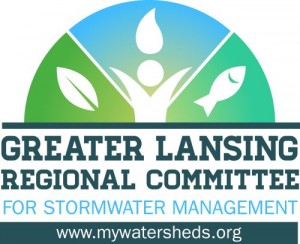Water resources management in urbanized areas poses unique challenges. Traditional development practices tend to cause a sharp increase in the total volume, peak flow rate and frequency of rainwater reaching rivers and lakes. This leads to rivers experiencing more bankfull flood events each year while also exposing them to powerful erosive velocities of stormwater for longer periods of time. The implementation of cost-effective retrofits of traditional stormwater management techniques is a priority for urbanized communities.
 In Michigan, approximately 350 communities and institutions are currently working to develop stormwater management programs in order to comply with the Phase II requirements of the federal Clean Water Act. In the Greater Lansing area, 18 communities in three major urbanized watersheds are seeking a sustainable approach to stormwater management. The current fiscal climate faced by municipalities dictates that they look for new and creative ways to manage their urban water resources. The communities are incorporating sustainable planning principles in the urbanized areas to protect water quality.
In Michigan, approximately 350 communities and institutions are currently working to develop stormwater management programs in order to comply with the Phase II requirements of the federal Clean Water Act. In the Greater Lansing area, 18 communities in three major urbanized watersheds are seeking a sustainable approach to stormwater management. The current fiscal climate faced by municipalities dictates that they look for new and creative ways to manage their urban water resources. The communities are incorporating sustainable planning principles in the urbanized areas to protect water quality.
Located in the central portion of Michigan’s Lower Peninsula, the urbanized watersheds include the Middle Grand River, the Middle Looking Glass River, and the Lower Red Cedar River watersheds. The major urbanization zones within these watersheds include the Cities of Lansing, East Lansing, Mason, Dewitt, and Williamston; Meridian, Delhi, Delta, Dewitt and Lansing Townships; and Michigan State University (MSU). A significant portion of these watersheds was originally forested or swamp/wetland. Several major thoroughfares transect the watersheds, including Interstate 96, Interstate 496, Interstate I-69 and US-127.
GREATER LANSING REGIONAL COMMITTEE
 The Greater Lansing Regional Committee for Stormwater Management (GLRC) is a guiding body comprised of 18 political communities and agencies within the Greater Lansing Region, including MSU, villages, townships, cities, and county drain commissioner and road commission offices. These communities and agencies organized across jurisdictional lines to discuss
The Greater Lansing Regional Committee for Stormwater Management (GLRC) is a guiding body comprised of 18 political communities and agencies within the Greater Lansing Region, including MSU, villages, townships, cities, and county drain commissioner and road commission offices. These communities and agencies organized across jurisdictional lines to discuss
how to manage water resources on a regional basis. Other groups that have been consistently involved with the planning activities associated with the project include school districts, utility authorities, and transportation authorities. The participating communities recognize the substantial benefits that can be derived through cooperative management of the watersheds and in providing mutual assistance in addressing urban water resources management.
Organized in 1999, the GLRC established an official agreement to pool resources on a regional basis to address stormwater management and to improve and protect the ecological, hydrological, and cultural resources of the three urbanized watersheds in the area. Through a multi-year process, and with significant input from watershed stakeholders, a number of goals were developed for the area watersheds. A critical goal is to encourage water friendly development in order to manage stormwater as a resource.
For more information about the GLRC please visit www.mywatersheds.org
